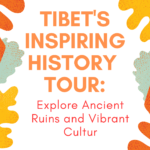In the snow-clad regions of Nyemo Zong near Lhasa, Chensal Kunphel was born into a small family in 1905. Originally named Dechen Choden, his life’s narrative unfolds from the simplest of starts to becoming a formidable force within the intricate web of Tibetan politics.
Sent to Lhasa at the age of 11 in 1916, Dechen Choden was destined to become a monk in training. It was his relentless pursuit of knowledge and remarkable dedication that drew the attention of the 13th Dalai Lama. Acknowledging his potential, the Dalai Lama welcomed him into his close circle, gifting him the religious name Chensal Kunphel. This marked the beginning of an extraordinary transformation.

Elevating to a Position of Influence
Chensal Kunphel’s exceptional loyalty and intellect swiftly made him indispensable. Between 1921 and 1933, he served as a personal attendant to the 13th Dalai Lama, a role that, despite lacking official recognition, placed him in a pivotal position of influence. British officials in Sikkim noted his close relationship with the Dalai Lama, treating him akin to a son and possessing considerable sway over him. This special bond illustrated Kunphel’s burgeoning prominence within the Tibetan political realm.
In Tibetan governance, the “Chensei,” or trusted advisor, status was not limited to nobility or official government roles within the Kashag (the governing council). It was a distinction awarded to those who demonstrated extraordinary capabilities and captured the Dalai Lama’s special attention through daily interactions. Alongside notable figures such as Tsarong Dazang Damdul and Lungshar Dorji Tsegyal, Chensal Kunphel emerged as one of the most trusted Chensei.

The Transformation of Tibetan Governance: The Rise of the Chensei
The emergence of the Chensei marked a significant turning point in the traditional workings of the Kashag, the governing body of Tibet. Traditionally, the Kashag addressed major issues or problems deemed necessary for resolution through the convening of public assemblies or directly presenting suggestions to the chief Kalon, who would then forward these to the Dalai Lama for final decisions.
By the late reign of the 13th Dalai Lama, there was a palpable shift in trust towards the Kashag. The government’s failure to effectively implement and advocate for new policies led to an erosion of confidence, necessitating a new approach to governance.
Chensal Kunphel: The Link Between the Dalai Lama and Kashag
Chensal Kunphel, favored by the Dalai Lama, became a crucial intermediary between the spiritual leader and the Kashag. Suggestions for governmental affairs, traditionally routed through the Kashag, now often reached the Dalai Lama through Kunphel, who reviewed and signed off on decisions, effectively controlling the flow of information and commands between the Dalai Lama and the government. This new dynamic significantly altered the administrative landscape of Tibet, with Kunphel at the helm of day-to-day governance.
Military Innovations and Architectural Endeavors
In 1931, amidst conflict in eastern Tibet, Kunphel persuaded the Dalai Lama to levy a corvée tax on wealthy households to recruit a thousand soldiers. These troops, armed with superior weaponry and training, formed the Drongdak Depon Regiment, a private military force directly loyal to Kunphel. Beyond his military and administrative responsibilities, Kunphel oversaw significant architectural projects, including the renovation of the Potala Palace’s eastern buildings, the construction of the Dzüdi Hydroelectric Power Station, and the development of the Norbulinga chensel Phodrang.

Cultural Preservation and Innovation
Despite the introduction of Western-style buildings by pro-British factions, Kunphel ordered the demolition of such structures at the Norbulingka, the Dalai Lama’s summer palace, preferring instead to erect traditional Tibetan-style buildings. One notable construction was the Chensel Phodrang named after Kunphel’s title, celebrated for its sculptures, wood carvings, and murals depicting landscapes and figures from across China.
Expansion of Military and Economic Infrastructure
Kunphel’s leadership extended to overseeing the Drapchi Electric Machinery Factory, established to support the Tibetan military by producing weapons, coins, and woolen goods. This period marked a consolidation of both secular and military power in Kunphel’s hands, making him one of the most powerful figures in Tibet, second only to the Dalai Lama.
Following the death of the 13th Dalai Lama in 1933, the Tibetan government faced the critical task of appointing a regent to lead Tibet. The governance model that had evolved under figures like Chensal Kunphel highlighted a significant shift from traditional bureaucratic processes to a more direct form of leadership and decision-making, reflective of the changing dynamics within Tibetan society and its governance.

The Downfall of Chensal Kunphel: A Turning Point in Tibetan History
The appointment of a regent in the aftermath of the 13th Dalai Lama’s death ignited a contentious debate among Tibet’s political and religious elite. Larung Tsewang Dorje (the son of Lungshar Dorji Tsegyal) later recalled that prior to Chensal Kunphel’s downfall, disagreements arose regarding the selection of the regent. Some advocated for the traditional practice of appointing a living Buddha, while others, led by secular officials like Changlochen Sonam Gyatso, argued for a departure from this norm, suggesting that a regent need not be a living Buddha. They proposed that having a secular official alongside a religious figure as co-regents could be more beneficial, highlighting that a living Buddha’s seclusion from worldly affairs might hinder effective governance.
Tupten Tendar, in his personal accounts of significant political events in Tibet, echoed these sentiments. The proposal to appoint a living Buddha as an assistant to the Silon (a high-ranking administrative position) faced opposition, with some pointing out that Chensal Kunphel’s proven trustworthiness under the Dalai Lama rendered the search for another candidate unnecessary. The secular officials were divided, with around twenty supporting Kunphel, some backing the monastic suggestion, and the majority remaining neutral.
The Unraveling: Arrest and Trial
Chensal Kunphel was initially the sole candidate proposed for the role of regent and Silon assistant at the people’s assembly. However, his tenure was short-lived. Allegations soon emerged accusing him of failing to promptly report the 13th Dalai Lama’s deteriorating health to the Kashag and Silons, a negligence that allegedly deprived the government of the opportunity to pray for the Dalai Lama’s recovery.
The public assembly’s investigation into the Dalai Lama’s demise led to Chensal Kunphel’s arrest on charges of failing to report the Dalai Lama’s illness in a timely manner. He was imprisoned in the Potala Palace’s Sharchen Corner Jail. The investigation, led by two senior officials, including Lungshar, initially sentenced Kunphel to death, a sentence later commuted. In early 1934, he was exiled from Lhasa for life to Zela Gangzong, managed by the Kongpo Chabna Monastery, with his family receiving various sentences.
The Illness and Death of the 13th Dalai Lama
The events leading to the 13th Dalai Lama’s death began with flu-like symptoms on November 30, 1933. Despite treatments, his condition worsened, leading to significant concern among the monastic and secular communities. Chensal Kunphel’s efforts to seek divine intervention for the Dalai Lama, including inviting the Nechung Oracle for a consultation, were unable to prevent the Dalai Lama’s passing on December 17, 1933.

Following the Dalai Lama’s death, Chensal Kunphel oversaw the traditional Tibetan funeral rites, preserving and enshrining the Dalai Lama’s body according to custom. His leadership during this critical period, however, would be overshadowed by the controversy that led to his downfall.
The complex interplay of religious beliefs, political power, and personal loyalty at this juncture of Tibetan history underscores the challenges faced by Tibet in transitioning between leaders. The debate over the regency’s nature, Chensal Kunphel’s subsequent arrest, and the surrounding events highlight the intricate balance of secular and religious influences in Tibetan governance. These events not only marked the end of Chensal Kunphel’s political career but also signaled a pivotal moment in the evolution of Tibet’s political and religious landscape.
The Complex Legacy of Chensal Kunphel and the Path to Tibetan Modernization
The 13th Dalai Lama’s illness and subsequent death, occurring within a mere 17 days, remained a mystery to many, including the Kashag government. Rumors circulated that Chensal Kunphel, in collusion with the Nechung Oracle, might have plotted the Dalai Lama’s demise. Kunphel, being among the most trusted by the Dalai Lama, was widely regarded as the prime candidate for regency. These allegations led to an official inquiry into the sudden death.
A public assembly involving senior officials, representatives from Lhasa’s three major monasteries, and various secular and religious figures was convened to investigate. The physician claimed that the Nechung Oracle, under divine possession, offered a traditional medicine that exacerbated the Dalai Lama’s condition. Both Kunphel and the physician accused the Nechung Oracle of administering the medication. Despite Kunphel’s claims of attempting to report the Dalai Lama’s illness, hindered by the Dalai Lama’s own wishes to avoid public unrest, all three were found at fault. Kunphel was dismissed from his position and exiled.
The Aftermath and Reformation Efforts
The death of the 13th Dalai Lama and the subsequent political upheavals led to significant shifts in Tibetan politics. Changlochen Sonam Gyatso, affected by the Lungshar incident, was also exiled. During their exile, connections were formed with other political prisoners, leading to the foundation of the Tibetan Improvement Party in India in 1939, aimed at reforming Tibet’s political and social systems.

Despite their revolutionary efforts, the party’s activities were uncovered by Indian police in 1946, leading to their expulsion. Chensal Kunphel, with the help of the Chinese Consulate in Calcutta, moved to Shanghai and later to Nanjing. Despite initial struggles, Kunphel’s fortunes changed, leading to his return to Lhasa in 1947, possibly facilitated by his reporting on the 5th Reting Rinpoche.
Integration into the New Political Landscape
After the establishment of the People’s Republic of China, Kunphel welcomed the entry of the PLA into Lhasa in 1951. He later contributed to the PLA’s grain procurement efforts and was appointed as the deputy director of the Geological Bureau following the establishment of the Tibet Autonomous Region Preparatory Committee. In 1957, he was received by national leaders, including Mao Zedong and Zhou Enlai, and attended national celebrations.
Final Years and Legacy
Chensal Kunphel’s life, marked by political turmoil, contributions to modernization efforts, and eventual integration into the new administrative framework of Tibet, reflects the complex interplay of traditional Tibetan governance and the pressures of modern state-building. His death in 1963 from a stroke, following a severe cold, brought an end to a life that mirrored the tumultuous transition of Tibet into the modern era.



















